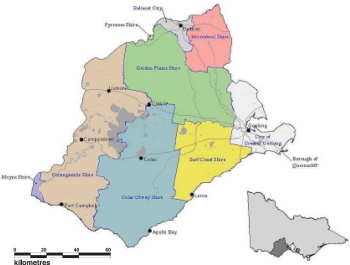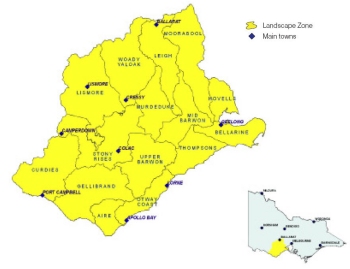The Corangamite Soil Health Strategy aims to guide investment in a range of actions that will protect and enhance natural and built assets in the Corangamite region from a number of soil-based threats or threatening processes. The strategy identifies specific assets that should be protected or enhanced, the various threats, the asset managers and other stakeholders who have been involved in its development and will potentially be involved in its implementation.
The Soil Health Strategy focuses on the identification and validation of priorities for investment to protect and enhance important natural and built assets in the Corangamite region. Importantly, these investment priorities are based on careful assessment of the relative value of assets and risks posed by threats.The Strategy also identifies the scale and time-frame for investment in soil health and the programs that should be employed to involve and create local participation across the Corangamite community. The Strategy also identifies the indicators and protocols that should be used to monitor the effectiveness of the investments, enabling progressive reassessment throughout its life.
The Corangamite region extends over some 1.3 million hectares of south-west Victoria, and includes many high value and irreplaceable natural resources, including internationally recognised lakes and wetlands. The region is home to a human population of some 400,000; the social and commercial fabric of their lives is as varied as any other part of the country and ranges from extensive and diverse primary industries to important manufacturing and exporting enterprises.
The Corangamite region includes part or all of nine municipalities; the Corangamite Catchment Management Authority (CMA) has delineated 15 landscape zones within its boundaries.
Community consultation and action
In the development of the strategy, many sectors of the Corangamite community were consulted. In some cases, self-evident needs and priorities for action could be and were identified, funding was arranged and work was initiated well before the finalisation of this document. Great encouragement for the future of the strategy may be taken from these initiatives and the ways they were established since they highlight a strong sense of ‘ownership’ of the soil health issue by various sectors of the local community.Services provided by the assets of the region are equally vital for the current and future wellbeing of the natural environment and the resident human population. The threats to these assets are real. Many are immediate; their effects have been and are currently being felt, seen and measured.
Protection and enhancement of the assets through investment – which must be targeted because the task is so large – is a responsibility that cannot be denied. A critical issue for the strategy has been the development and application of a robust logic for determining the investment priorities.





